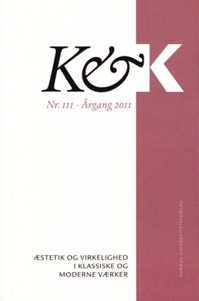Musik og design. Phil spector og lydfladens medialisering
DOI:
https://doi.org/10.7146/kok.v39i111.15760Nøgleord:
Sound design, music produktion, aesthetics, Phil Spector, Wall of Sound, sound density, mass culture, pop, 1960’sResumé
MUSIC AND DESIGN. PHIL SPECTOR AND SOUNDSCAPES MEDIATIZATION
Phil Spector is often referred to as one of history’s first true music producers, and his famed ‘Wall of Sound’ has been the model for many future musical productions. However, Spector’s productions can also be seen as an early manifestation, among others, of a much more general change in the auditory popular culture around 1960 away from the conventional approach to musical
sound as something that depends primarily on a musical performance and secondarily its technical reproduction S towards a conception of music as a form of design. Hence, Spector’s productions make a favorable material for a more general investigation of the relationship between music and design. Despite the rather extensive literature on Spector and his music, and on sound recording and sound production in general, the different aspects of Spector’s design have not yet been the subject of a broader phenomenological and aesthetic investigation. “Music and Design” explores the key elements in Spector’s musical project through an analysis of his use of repetition, accumulation and synthetized sound in hit recordings such as He’s a Rebel (1962) and Be My Baby (1963). It is argued that Spector’s productions are basically characterized by a displacement of the auditory focus from external media conditions, to musical sound as simultaneously a more synthetic and mediatized as well as more
massive and ‘massified’ soundscape. This mediatization of the soundscape would later constitute a predominant aesthetic model not only in current music production, but in modern sound design in general.
Downloads
Publiceret
Citation/Eksport
Nummer
Sektion
Licens
Tidsskriftet følger dansk ophavsret.





